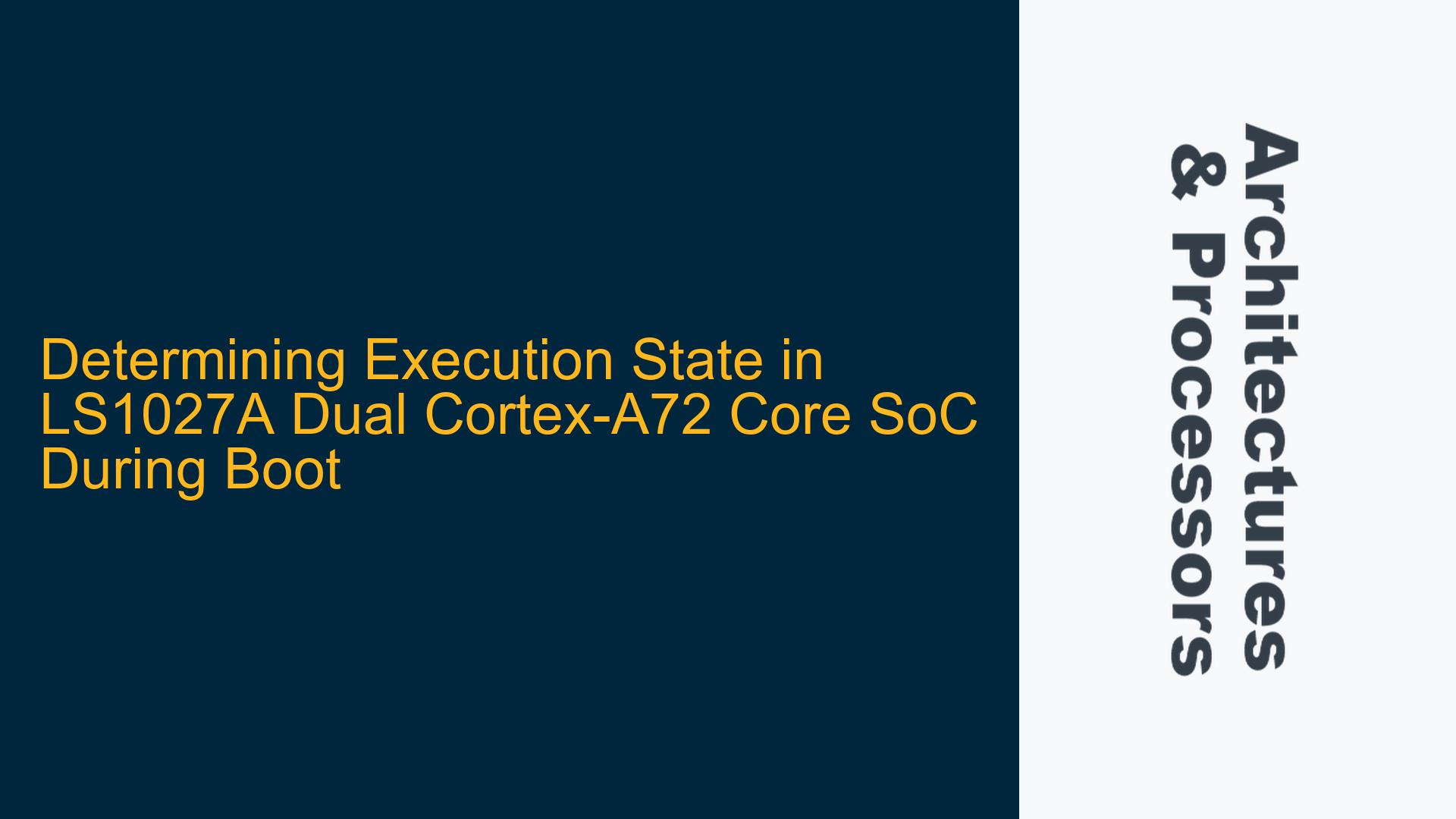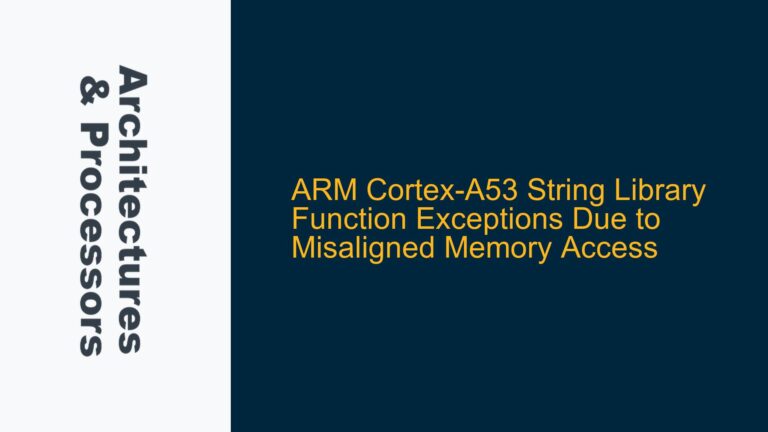Understanding the AA64nAA32 Signal and Boot Execution State
The LS1027A SoC, featuring dual ARM Cortex-A72 cores, is a powerful processor often used in embedded systems requiring high performance. One critical aspect of its operation is determining the execution state (AArch32 or AArch64) during the boot process. This determination is governed by the AA64nAA32 signal, which is sampled during power-up reset. The AA64nAA32 signal is a hardware input that dictates whether the processor will boot in AArch32 (32-bit) or AArch64 (64-bit) mode. This signal is crucial because it sets the foundational execution environment for the processor, influencing everything from memory addressing to instruction set availability.
The AA64nAA32 signal is not a software-configurable parameter but rather a hardware signal that must be set correctly during the design phase of the system. This signal is sampled only during the power-up reset sequence, meaning that any changes to this signal after the initial boot will not affect the execution state. The signal is typically driven by a pull-up or pull-down resistor on the board, or it could be controlled by a more complex logic circuit depending on the system requirements.
Understanding the AA64nAA32 signal requires a deep dive into the ARM architecture, particularly the Cortex-A72 Technical Reference Manual (TRM). The TRM provides detailed information on the signal’s behavior, including its timing requirements and the implications of setting it to either 0 (AArch32) or 1 (AArch64). The signal is part of a broader set of configuration signals that are used to initialize the processor core during the boot process. These signals are critical for ensuring that the processor starts up in a known and stable state, ready to execute the bootloader and subsequent operating system.
Hardware Configuration and Signal Timing Requirements
The AA64nAA32 signal is a hardware-level configuration input that must be set correctly before the processor exits the reset state. This signal is sampled during the power-up reset sequence, and its value determines the execution state of the processor. The signal is typically driven by a pull-up or pull-down resistor on the board, or it could be controlled by a more complex logic circuit depending on the system requirements. The timing of this signal is critical; it must be stable before the processor exits the reset state to ensure that the correct execution state is selected.
In addition to the AA64nAA32 signal, there are other configuration signals that must be considered during the boot process. These include signals that control the clock frequency, voltage levels, and other critical parameters that affect the processor’s operation. The timing requirements for these signals are typically specified in the processor’s datasheet or TRM, and they must be carefully followed to ensure reliable operation.
The AA64nAA32 signal is part of a broader set of configuration signals that are used to initialize the processor core during the boot process. These signals are critical for ensuring that the processor starts up in a known and stable state, ready to execute the bootloader and subsequent operating system. The timing of these signals is typically specified in the processor’s datasheet or TRM, and they must be carefully followed to ensure reliable operation.
Implementing and Verifying the AA64nAA32 Signal in Hardware Design
Implementing the AA64nAA32 signal in a hardware design requires careful consideration of the signal’s timing and electrical characteristics. The signal must be stable before the processor exits the reset state, and it must be driven to the correct voltage level to ensure that the processor interprets it correctly. This typically involves using pull-up or pull-down resistors to set the signal to the desired state, or using a more complex logic circuit if the signal needs to be dynamically controlled.
Once the AA64nAA32 signal has been implemented in the hardware design, it is important to verify that it is functioning correctly. This can be done using a combination of simulation and physical testing. Simulation tools can be used to model the behavior of the signal and ensure that it meets the timing requirements specified in the processor’s datasheet or TRM. Physical testing can then be used to confirm that the signal is being sampled correctly during the power-up reset sequence.
In addition to verifying the AA64nAA32 signal, it is also important to verify the other configuration signals that are used during the boot process. These signals must also meet their timing and electrical requirements to ensure that the processor starts up correctly. This typically involves using a combination of simulation and physical testing to verify that all of the signals are functioning as expected.
In conclusion, the AA64nAA32 signal is a critical component of the boot process for the LS1027A SoC. It determines the execution state of the processor and must be implemented and verified carefully to ensure reliable operation. By understanding the signal’s behavior and following the timing and electrical requirements specified in the processor’s datasheet or TRM, designers can ensure that their systems start up correctly and operate reliably.






